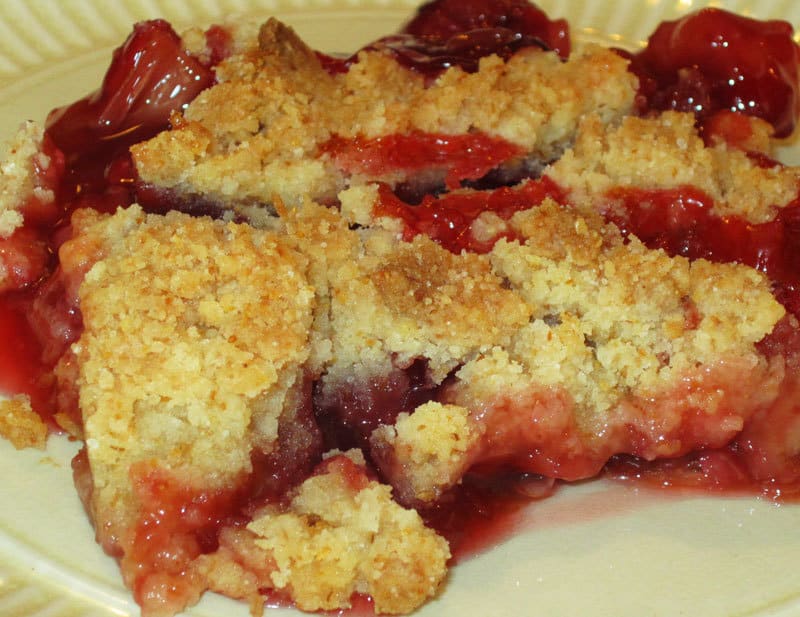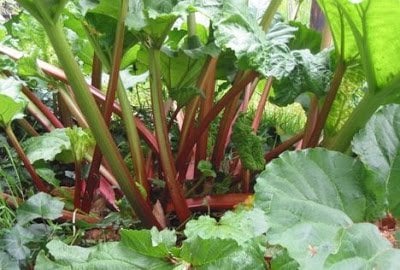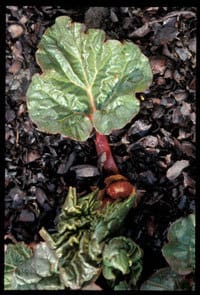What to do with all your rhubarb!
So much Rhubarb you don’t know what to do with it?
We at Sturdiwheat just love the stuff. Read our favorite rhubarb stories and recipes here!
“As kids we would go out to the rhubarb patch with some sugar in the bottom of a coffee cup, pull a rhubarb stalk, dip it in the sugar and take a bite! Ohhhh that sweet and sour taste I can remember to this day! Loved it!”
– Debbra
“Last night a friend brought a favorite rhubarb dessert to our poker night: baked, only slightly sweetened rhubarb on a buttery crust under a meringue. Next week, I anticipate hearing the call from another friend for her wonderful rhubarb custard pie. My own rhubarb will be baked under a crisp topping and eaten with vanilla ice cream at least once. Then it is time to try new the new recipes I find each year. Tarts, muffins, jam.”
– Suzanne
“Yum! I might make crisp today, I was browsing these a few days ago from Martha http://www.marthastewart.com/275393/rhubarb-recipes”
– Missi
Rhubarb
Did You Know?
- We are at the beginning of the rhubarb season, May through July.
- Rhubarb was known and used by monks medicinally in northern Asia.
- There are many ways to enjoy the stems, but don’t eat the leaves (oxalic acid – a lethal dose might be 11 pounds of leaves at one sitting) or the roots (purgative ).
- The stalks also contain high levels of oxalic acid, which can tie up calcium and make it unavailable in the body. Eating an occasional dish containing rhubarb does not pose a serious nutritional threat. Spinach also contains high levels of oxalic acid. However, people with gout, kidney disorders, and rheumatoid arthritis may want to avoid foods high in oxalic acid and should consult with their physicians about consuming these foods.
- Lanesboro is the official Rhubarb Capital of Minnesota. Their Rhubarb Festival is always the first Saturday in May. http://www.rhubarbfestival.org/
- Not to be outdone, Duluth also has an annual festival, this year on June 25 http://www.chumduluth.org/rhubarbfestival.htm
Planting
Rhubarb plants can be very large, with a single plant able to provide enough for a family. Each plant should be allowed a three-foot by three-foot area in the garden. For most gardeners, it’s most convenient to position rhubarb at the edge of the garden. It should be in a spot that receives all-day sun. Rhubarb is hardy in USDA Zone 4, and worth trying in Zone 3.
Rhubarb plants are often acquired from another gardener who is dividing a large plant. Although there is a possibility of receiving a plant infected with a virus, chances are good that the plant is healthy and vigorous, since it is large enough to need dividing. Plants can also be purchased at garden centers and from mail-order catalogs; nursery-grown plants will be virus-free.
Rhubarb seed is also sold through catalogs. The reddest varieties are not available as seed, only as plants. Start seed indoors six weeks before the last frost date for your area. Cover the seed lightly, keep moist, and supply bottom heat to improve germination and seedling health. It may be two or three weeks before seedlings emerge. Harden plants off for at least a week before planting out in the garden.
Prepare the soil by tilling or forking to a depth of at least two feet, to allow the new plants to root easily. Add plenty of garden and kitchen compost or composted manure to increase organic matter, improve drainage and supply nutrients. It’s best to prepare the soil and let it settle for a few days before planting, so that newly-set plants don’t end up too deep.
Seedlings, divisions from a neighbor’s garden, and plants bought in pots at garden centers should be planted at the same depth they are growing in the pot. Bare-root plants bought through the mail should be planted with the crown of the plant just level with the soil. Water well after planting.
Pies, crisps, cakes, jams or maybe wine! Whatever or however you decide to use your rhubarb (or the neighbors’) it is delicious.
Sturdiwheat Apple Crisp Topping Mix makes an easy dessert and a simple way to use your rhubarb.

More Rhubarb info.


